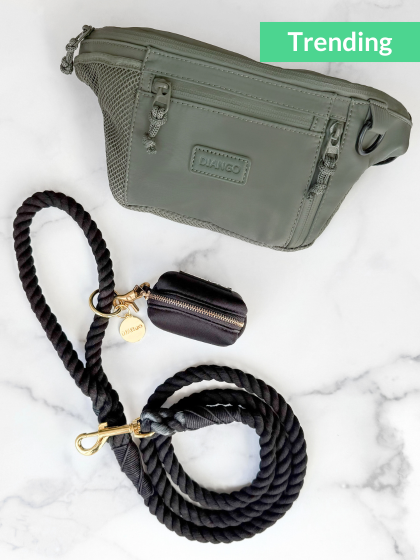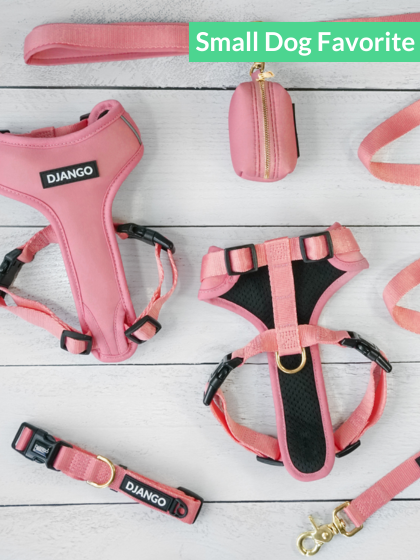Dr. Ian Billinghurst is the father of the raw dog food diet and the founder of the BARF ('Biologically Appropriate Raw Food' or 'Bones and Raw Food') diet. In late 1993, he wrote Give Your Dog a Bone. The worldwide best seller is one of the most important books on dog nutrition ever written. It discussed why raw, whole food is best for your dog. He also published The BARF Diet and Grow Your Pups with Bones. Most recently, Dr. Billinghurst is now the Senior Advisor to a fermented superfood probiotic company, Gussy's Gut.
As an Australian veterinary surgeon with 50 years of experience, Dr. Billinghurst has one consistent message. Raw-fed dogs are healthier than their kibble-fed counterparts (who are ‘always’ at the vet).
We caught up with the long-time raw food champion and international lecturer to discuss the controversial raw dog food diet. We also dig into how gray wolves evolved into modern dogs, and we weigh the benefits of the raw dog food diet against safety risks like food-borne pathogens. Finally, we chew over how to solve the companion dog population boom and consider why so many veterinarians have raw emotions about raw pet food.
What is the BARF diet?
The BARF diet is based on evolutionary science. This alternative raw dog food diet is made up of muscle meats, organ meat (i.e., liver, kidney, brain, and hearts), raw meaty bones, egg yolks, leafy green vegetables, fresh fruit, nuts and seeds, fermented dairy products (e.g., yogurt and Kefir), and healthy oils (e.g., cod and sunflower oil).
What inspired you to come up with the BARF diet for dogs?
I started as an agricultural scientist, not a veterinary surgeon. I was young and very gung-ho, 22 or something, newly married...way too young to get married. I started a family, but we did not have much money. Agricultural scientists were not paid a great deal in those days. I would go out and shoot rabbits and kangaroos, which is something I could never do today.
I acquired a dog named Candy. As an agricultural scientist, I had been trained in nutrition for cattle, poultry, and sheep. But I was not trained in canine nutrition. I had a general idea that dogs just ate bones and scraps, stuff from the butcher. That was because I had never owned a dog before. My parents would not let us own dogs.
We fed Candy rabbits, butcher scraps, meat, bones, and table scraps, particularly from the kids. Now, that dog never got sick. She was absurdly healthy, and she had a friend up the road. He was male. Twice a year, she would go up there and mate with him. She raised litters of pups with great ease. This is how I discovered what dogs should eat.
Have you ever fed any of your dogs a commercial pet food diet?
When my family started showing dogs, they said, “Now we have to start feeding our dogs processed pet food. So they will be absolutely, brilliantly healthy.” Over 2 years, my dog's health declined dramatically. I started to have problems like a lot of my clients. Suddenly, the light came on. This processed pet food is the very thing that is causing the health problems that I treat daily.
Have you always recommended raw dog food to your clients?
Even as a newly graduated veterinarian, I did not feed my dogs any processed pet food. They were always healthy. What did I tell my clients? Well, I wanted to say processed pet foods are harmful. But I told them some mishmash like, “Oh, I do not feed my pets processed food, but that is our training.”
Dogs descended from gray wolves, but they are not wolves. According to Vet Life Today, “there are genetic, anatomic, and physiologic differences between domestic dogs and wolves that result from selective pressures associated with living with humans.”
Have we domesticated dogs to the point that the raw dog food diet is no longer appropriate?
As part of my study, I looked at the evolution of canines. The first stage was the pre-period before any association with man. That ended somewhere between 40,000 and 100,000 years ago. During that time, gray wolves were mostly carnivorous. When they were starving, they had some vegetable material from the guts of their prey. Some gray wolves began following humans around. Of course, they were scavenging off the hunting remains of humans.
Around 10,000 to 15,000 years ago, humans ran out of wild animals to hunt and became farmers. They domesticated livestock and grew grains. Human health dropped at the same time they started to eat grains. In fact, their height dropped by about 6 inches on average.
Outside of small villages, rubbish dumps attracted the friendliest wolves. They gradually changed their shape and appearance. Gray wolves started to be able to breed twice a year instead of once. Their coat colors changed, and their snouts became shortened and more downturned. They started eating their feces, small prey animals, and vegetables from the guts of animals thrown in the trash piles. Bone-eating also increased because humans were tossing them out in these garbage heaps. These were the basic evolutionary changes that occurred to the wolves' diet as they became modern dogs.
On your website, you say, “Nutrition is not complicated and it must be based on actual food. Real food is much greater than the sum of the limited nutrients that modern nutritional science (and/or AAFCO) thinks it should contain.”
Why should pet parents look to evolution as their final authority, rather than the AAFCO?
It is like saying, “Well, look, I am not going to use the manufacturer's recommended spare parts. They are more expensive, so I am going to just use these non-recommended spare parts. Sure, they are not quite as good, but they might do the job, mate.” They do not. Whether you believe in God or evolution, dogs are designed to eat raw, whole foods. When it comes to feeding your dogs, it is the best option.
What are some of the benefits of the BARF diet for dogs?
Most diseases either fail to appear or mostly disappear when you feed your dog a balanced raw food diet. As a very lazy person, that was great for me. I could just recommend raw dog food and get on with other things that I like to do. I did not make a lot of money, though. Recommending raw dog food was not a great business model.
The veterinary profession has a booming business model, but it does not know that. Veterinarians recommend commercial pet foods that create patients over a long time. They produce health problems, which have very expensive partial solutions. For any particular dog, once you have caused the problem, you keep it at bay with prescription drugs and monitoring. I never became rich because I refused to follow that business model.
Are there any clinical trials that have studied the benefits of BARF over commercial dog food?
There are no large-scale clinical trials. It is too expensive, and who's going to do it? Pet food companies are not going to prove that their stuff is inferior. If they conducted a study, it would probably compare their pet food to a very poor raw food product.
The American Veterinary Medical Association, U.S. Food and Drug Administration, Centers for Disease Control and Prevention, and American Animal Hospital Association do not “support or advocate the feeding of raw protein diets to pets."
In your opinion, why is the raw food diet so controversial?
When I became a vet, I was expecting to be highly trained in cat and dog nutrition. I was taught if you can read the pet food label and it says complete and balanced, then that is it. That is what you feed dogs and cats now. The message, in principle, has not changed very much. Today, representatives of pet food companies and veterinarians tell the same story.
In your book The BARF Diet, you say, “Starch was introduced as a cheap energy source 70 years ago.” There is a variety of grain-free kibble on the market. In your opinion, is it any better?
Grain-free kibble is worse. It is still full of alternative carbs like pea flour, right? Grain-based dry dog foods have gluten, so they are probably much more nutritious. One of the other problems is that grain-free kibble doesn’t have enough taurine. That is causing dogs to have dilated cardiomyopathy.
A 2011 study found that 60% of raw dog food products have too much calcium but not enough vitamin A, copper, iodine, or zinc. Is there a way to make sure that your dog’s raw food is nutritionally balanced?
The AAFCO’s standards are not valid for all dogs. For example, excess copper will promote angiogenesis in tumors. You would have to look at each of these nutrients individually. And then, look at the food sources the AAFCO is talking about.
That sort of broad statement for most dogs is not true. When we feed dogs a properly-balanced diet based on their evolutionary background, we do not have these problems. It is probably invalid and used to dissuade people from feeding raw food to dogs.
What is your take on letting your dog have extensive variety in their diet vs. feeding them one protein or dog food brand throughout the years?
Dogs are hunters and offal eaters. They are kind of omnivores with a carnivorous leaning. Their vegetables have to be crushed like the gut contents of a prey animal. They need fermented food to represent the fermenting contents of the guts of their prey.
When I watched a German Shepherd dog—who was eating some horrible dry dog food—turn around and eat its own feces, hot and steaming at the other end, I realized they were more nutritious than the stuff that went in the front end.
Feces contain the living bodies of bacteria. They are also full of prebiotics and probiotics. They have first-class protein, essential fatty acids, and an excellent amino acid profile. I could not recommend that people start feeding dog feces. So what is in the feces? Add alfalfa powder to your dog’s food for minerals and kefir or yogurt for probiotics.
What are your favorite raw dog food brands?
I do not have a favorite raw dog food brand. I do not think that way. If you are keen on trying raw dog food, make it yourself. You have to set aside 1 day a month to do it properly, and it's worth it. Most people get lazy and just end up feeding raw meat. Of course, that's completely unbalanced, so they throw in some kibble. The whole thing is self-defeating. If you can find a consistent raw brand that matches the nutritional requirements of a dog, then sometimes that's better than trying to do it yourself.
Should you make raw dog food without a background in canine nutrition?
Raw dog food is very simple. You do not need an Excel spreadsheet, and you don't need to know nutrition. We concentrate on food, not the nutrients. Because if you get the right food—particularly if it has been well grown in organic soils—you will have all the nutrients that dogs need. Raw and whole food is full of the nutrients we know about and the ones we don't know about. This is my basic philosophy, and it makes feeding dogs and cats absurdly simple.
How can a dog owner make the switch from commercial to raw today?
There is the fasting method and the gradual change method. The fasting method is simple. All you have to do is not feed your dogs for several days until they are ready to eat just about anything. You are not going to starve your dog. That would be cruel and unnecessary. All you are going to do is provoke some real hunger.
The other method is the gradual change method. If it is not done properly, it will not work. Identify your dog’s favorite food and finely mince it. Once your dog is eating this, mince the raw food (e.g., chicken wings) that you want to get your dog to eat. Add a tiny amount of the raw minced food to your dog's favorite food. The amount should be so small that your dog cannot detect it. Then increase the amount of raw food while decreasing the amount of the much-loved minced food. Eventually, your dog will be eating the new raw food by itself.
What would you say to someone who thinks raw dog food is too expensive (versus pre-made commercial dog food)?
If you want your dogs to have supreme health, feed them properly on real food, and if you can, locally source it. Raw dog food should be much cheaper than processed pet food, but you will save money on the vet bills. You also save the angst that goes with having a continually sick dog, sending them into diagnostics, and putting them on a merry-go-round of drugs. One drug leads to side effects, so you have to do another one. It is terrible. It does not have to be that way.
According to the Journal of Small Animal Practice, 86% of raw dog food products have E. coli. But the National Science Foundation says, “Dogs have stomach acid that is 10 times stronger than ours and a shorter digestive tract.”
Does this prevent food-borne pathogens from getting a foothold?
If you remove all the pathogens from your dog's diet, you encourage autoimmune disease. The immune system wants something to fight, so it'll start to attack itself. It is very sad. The immune system needs to live in harmony with bacteria. Your dog has a microbiome. And you and I have a microbiome. If you walk into somebody's space, you're sharing their microbiome. We have more DNA from microscopic bugs in us than we have our own DNA. This desire to be sterile is just another thing that makes us unhealthy.
Can you tell us a little more about raw meaty bones?
A 3-year-old chicken that has been producing eggs has bones like steel. That is why raw meaty bones should be derived from young animals. Stick with bones from young organic chickens because they are relatively soft. You can also use uncooked pork bones, veal bones, all that sort of thing. If you are concerned, grind them up. I produce raw food for my dogs and cats. I bought a commercial meat grinder, and you can get them quite cheaply. Put the chicken wings and other soft bones through. If you're serious about having healthy dogs, make it yourself or go to a reputable raw dog food company.
According to a recent survey from Pet Partners, 20% of therapy animal organizations prohibit dogs on raw diets from being therapy animals. Children, the elderly, and sick people have weaker immune systems. Do you think this policy is fair?
It is scaremongering because it does not happen. The bacteria in the tartar thrive on the carbs found in commercial dog food. They invade the gums, roots, and enamel, causing tooth decay, pain, difficulty eating, and eventually, tooth loss. Dogs fed commercial pet foods have more foul mouths and are more dangerous to people than dogs fed real food.
Do you think the industry will move toward raw dog food? Or has the commercial dog food industry taken a firm and unwavering hold in the market for the foreseeable future?
It is a matter of resources. Do we feed dogs according to their actual requirements? We would need a lot of cattle, sheep, pigs, and poultry. Ideally, we should be feeding them off pasture.
Pet food companies have enabled this huge number of companion animals to be on Earth. Where do we go from here? This raises a lot of moral problems. How do we provide enough food for humans? If we talk about limiting humans, we get into an area called eugenics, which is terrible. Ideally, we should have fewer dogs. We know this because so many dogs end up in shelters to be euthanized. I would like to eliminate the need for animal shelters and rescue groups.
How can we feed the growing number of companion animals?
If you breed flies and use the early larvae stage, that is brilliant raw food. If you look at the Australian dingo, at times, it will live for up to 12 months on insects. Insects are a sustainable way to feed dogs. They are a great source of protein, calcium, central fatty acids, vitamins, and minerals.
Dr. Billinghurst, thank you for taking time out of your busy day to speak with us. DJANGO Dog Blog readers will benefit from the information you shared about raw dog food.
We look forward to hearing about their raw dog food journey and answering any BARF diet questions in the comments section.














4 comments
DJANGO
@DANIELA ¡Hola Daniela! Gracias por tu mensaje. Esta publicación no fue parte de una entrevista en video, por lo que no hay un enlace disponible. Si tienes alguna otra pregunta o necesitas más información, estaremos encantados de ayudarte.
Hi Daniela! Thank you for your message! This post was not part of a video interview, so there isn’t a link available. If you have any other questions or need more information, we’re happy to help.
@DANIELA ¡Hola Daniela! Gracias por tu mensaje. Esta publicación no fue parte de una entrevista en video, por lo que no hay un enlace disponible. Si tienes alguna otra pregunta o necesitas más información, estaremos encantados de ayudarte.
Hi Daniela! Thank you for your message! This post was not part of a video interview, so there isn’t a link available. If you have any other questions or need more information, we’re happy to help.
Daniela
Buen día, me gustaría saber si tienen el video de la entrevista o el enlace del mismo. En espera de su pronta respuesta, muchas gracias.
Buen día, me gustaría saber si tienen el video de la entrevista o el enlace del mismo. En espera de su pronta respuesta, muchas gracias.
DJANGO
@RENEE We’re so glad you enjoyed our interview with Dr. Billinghurst!
@RENEE We’re so glad you enjoyed our interview with Dr. Billinghurst!
Renee
I had never heard of raw dog food before, so this was very interesting! Thank you for doing this interview.
I had never heard of raw dog food before, so this was very interesting! Thank you for doing this interview.